| Columns Retired Columns & Blogs |
Lampi wasn't there?

At the risk of writing hyperbole, I will state that Audio Video 2023, held October 27–29, 2023, was unlike any other audio show I've attended. At no other audio show have I encountered so many young people, so many women, and so many brands unknown in the United States. Not even in Munich have I encountered crowds as dense as those that mobbed the show's biggest site, the National Stadium of Poland, PGE Narodowy, on Saturday. A press badge counts for nothing when you're 11" short of 6'3", attempting to see far enough into a huge room to spy a seat. Any seat.
Happily, the majority of attendees at the Warsaw Show did not come to yap away about the stock market or the speaker they built three decades ago. People came to listen, and they respected others who came to listen. Even in the largest rooms, with crowds of some 150 people, it was possible to hear music and learn from presenters' unamplified raps.
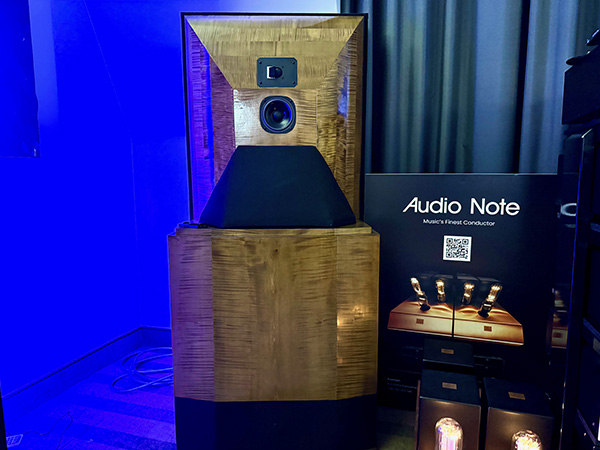
Day 1
My first show experience was the night before opening day: a short preview of unusual Snell Type A loudspeaker replicas manufactured by Audio Note distributor Wojtek Szemis and powered by Audio Note gear. I then spent my first show day on the eight exhibition floors of the Radisson Blu Sobieski. According to the show guide, the Radisson alone had at least 100 exhibit spaces, almost all of which hosted active systems.
At first, everything I heard sounded tipped up, edgy, and lacking in warmth, perhaps because those systems had insufficient time to settle in. Finally, when I heard Dylan sing "Man in the Long Black Coat" through Blackwood Artanis active loudspeakers from Croatia, I was able to declare "At last, a solid midrange!" These speakers, which delivered a fair amount of color and air on—sigh—"Hotel California," are sold direct in Croatia, and include in-home setup and DSP calibration.
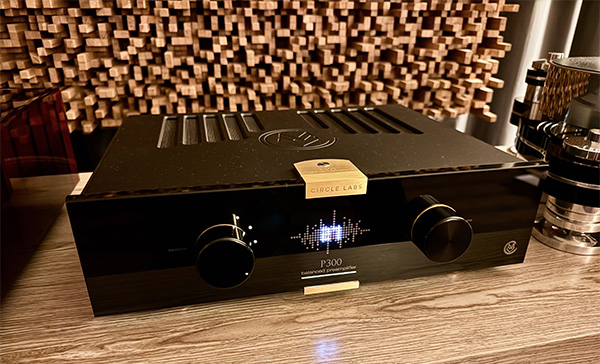
The next room I encountered where I could finally relax into sound that was realistic and inviting was dominated by Krakow-made and designed Circle Labs electronics. Assisted by trusted and true Dynaudio Confidence 50 loudspeakers and effective room treatment, the sound was so lovely and edge-free that I wanted to sit for hours as I sank into the smoothness of The Bassface String Trio performing "Dream Dancing."
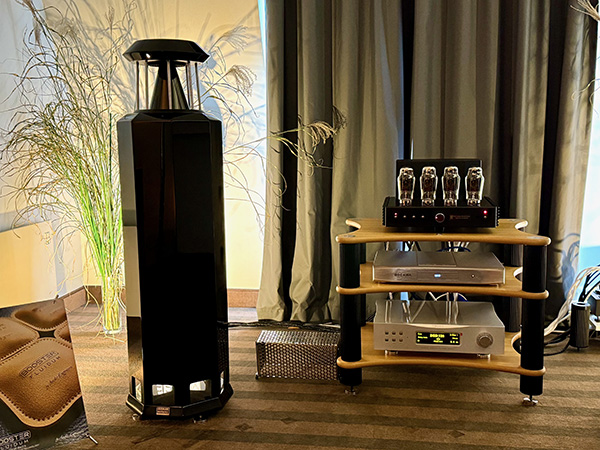
I also enjoyed the pairing of the Czech Republic–based KR Audio VA950, complete with Kron KT150 tubes, and German Physiks HRS-130 speakers. The amp's first stage is solid state; the output stage is tubed. With a Chinese DAC and Romanian wireless Rokna streamer, the sound was spacious. I wish I could have listened longer.
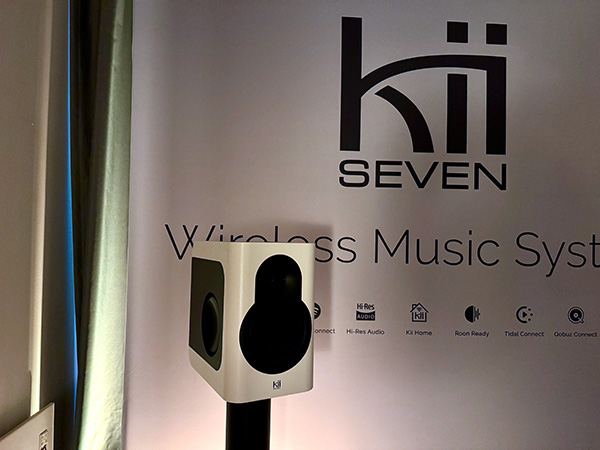
Lo and behold, a premiere: The new Kii Seven Active Wireless Music System. Released October 1 and launched in the US at NAM in January 2024, the Seven system is intended for users who choose to stream via laptop rather than a dedicated server. Claimed to be "completely coherent down to 35Hz," the Kii Seven is happy close to a wall. A side woofer handles the lower reaches, and a cardioid system takes over from 130Hz up. The speaker also has a digital input that can process signals up to 24/192 through different DACs on each driver. On organist Jean Guillou's old Dorian recording of Pictures at an Exhibition, the Kii Sevens threw a huge, spacious soundstage with a solid bass foundation.
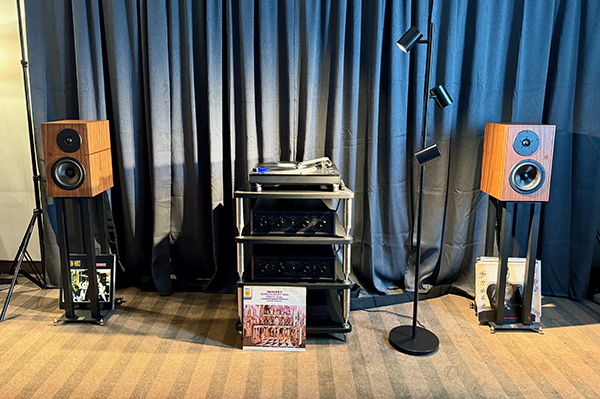
Moonriver showed its new 505 hybrid phono stage and forecast its 606 integrated for 2024 release. Midrange warmth and power were provided in spades through French-made Revival Audio Atalante 3 loudspeakers. As I listened with pleasure, I recalled once again why I went gaga over the Moonriver 404 integrated's gift of quality sound for a reasonable price.
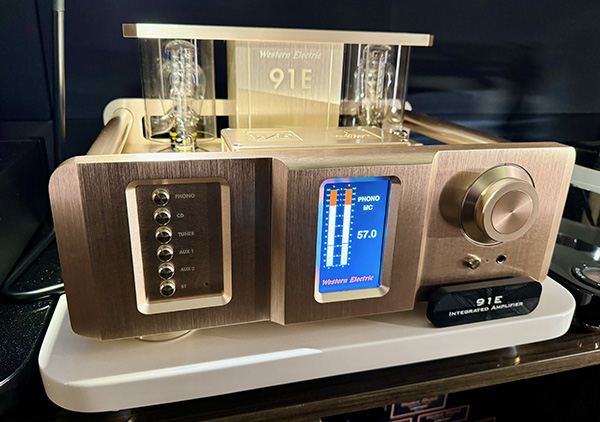
The big news in the Western Electric room, other than the spacious soundstage created by its Type No.91E Integrated, was the forthcoming 20W 80-series entry level integrated, due in the first quarter of 2024, and the big 102M monoblocks, with hand-built 308B vacuum tubes, which are due in quarter three. The 102Ms are expected to produce about 125Wpc of single-ended triode power. Like the 91E, this new WE amplifier will offer a choice of output transformers, from 4 to 24 ohms, which should allow the amplifier to drive "all speaker loads." Trent Suggs, who is now with WE, said that Western Electric is working with Wilson Audio Specialties to ensure that this and other Western Electric amps are able to drive Wilson loudspeakers. My ears perked up at the thought of reviewing Western Electric monoblocks that can drive my Alexia Vs.

An excellent Polish brand, Fezz Audio, has entered the US market via Bluebird Music distribution. "Silence, warmth, and glow" I wrote of a setup that combined Fezz Titania 90Wpc monoblocks with KT88 tubes, Fezz Sagita preamplifier, Fezz Gratia MM/MC phonostage with 12AU7 tubes, the brand-new Fezz Equinox evo DAC with 12AU7 tubes—the product of a rare collaboration with Lampizator. Also in the system was the Muarah turntable from Poland, expected to be available in the US, and Pylon Diamond 30 MKII speakers available only in Europe and Asia. Day one ended with a mix of the tried-and-true with products that were new to me: Joseph Audio Pulsar loudspeakers with a Circle Labs M200 amplifier and P300 balanced preamplifier from Poland, J. Sikora Initial MAX Special Edition turntable from Poland with Aidas Durawood cartridge from Lithuania, Amber 3 DAC from Poland's Lampizator, and Cardas cabling. Some would kill for such midrange smoothness.
Saturday's Madhouse
Encountering thousands of people at the stadium, I briefly felt like a child wanting to hide under mother's coat. So, I retreated to the relative safety of the approximately 150 people mobbing the Wilson/D'Agostino/dCS room. Because the standing waves in the stadium's large spaces were virtually uncontrollable—dCS's Alasdair McDonald reported hideous modes at 44 and 88Hz—Wilson's Polish distributor chose to exhibit the new, smallish Sasha V. Also in the system: the new dCS Lina DAC, D'Agostino Momentum M400 MxV monoblocks. The sound was wonderful.
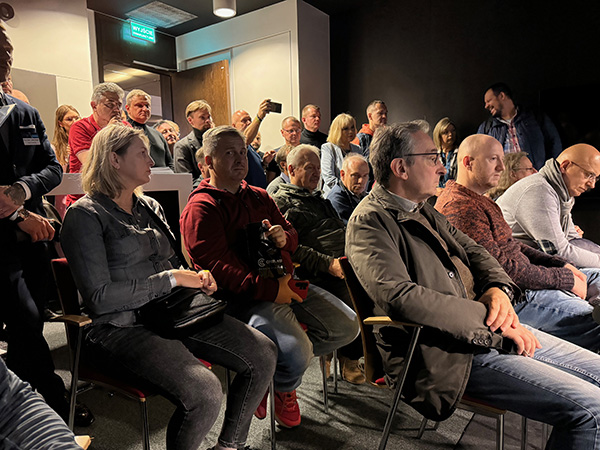
The filled-to-capacity Gryphon room offered excellent sound with Wilson SabrinaX loudspeakers—though, based on my experience, it could have been even better if the speaker grilles had been removed.
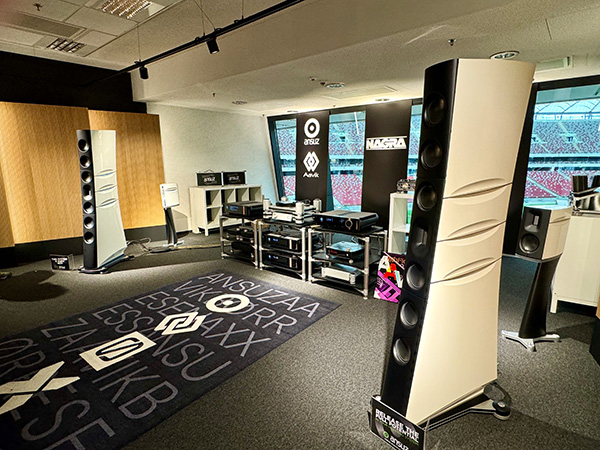
The alliance of Ansuz, Aavik, Børresen, and Nagra broke the stadium's all-bets-are-off-in-the-low-bass rule. With help from wood diffusers on the sidewalls, the mighty Børresen M6 loudspeakers impressed with clearly pitched bass on the room's special demo of Sommelier du Son recordings made on old tape players.
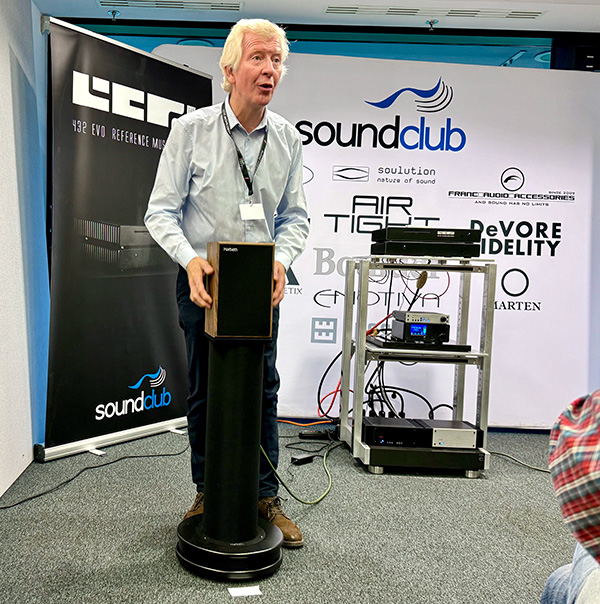
Harbeth's Alan Shaw declared that people have asked Harbeth for speaker stands for a good 50 years. Harbeth has gone one better: Customers downsizing and choosing smaller Harbeth speakers that lack deep bass can now purchase Harbeth Nelson speaker stands, which include an active Harbeth-made (sub)woofer. The only control is the one for volume. The Nelson descends to 35Hz, cuts off sharply at 125Hz, and is said to be compatible with any BBC-inspired minimonitor. For the moment, this product is not available in the US.
Poland's Ferrum Audio did something devilish: They displayed a Roon-based system that allied their little Wandla DAC/preamp and HYPSOS power supply with a huge Gryphon Antileon amplifier and similarly large Metrum Lab Stretto loudspeakers from Poland, which Ferrum uses for final tuning and testing. You wouldn't think of pairing these small, relatively low-priced boxes with big, top-level amplification and speakers—at least until you heard them together. Ferrum held its own and acquitted itself wonderfully in far more costly company; the system featured a beautiful mellow top end and a bountiful bouquet of sonic color.
Gryphon's new Diablo 333 integrated, which I covered at Munich High End, joined an Aurender music server and the aforementioned Wilson Sabrina X loudspeakers to produce excellent bass on Finland's Club for Five's rendition of "Brothers in Arms." People sat in silence, enraptured by the sound.

The day ended with a demo that compared the Innuos Pulsar network player with the three-times-more-expensive Innuos Statement Next-Gen (NG) music server. Both contain reclockers designed to remove jitter. Through an Innuos PhoenixNET Network switch, Nagra HD electronics, Rockport Avior II loudspeakers, and Transparent XL cabling, this very colorful system showed how much fuller, larger, and richer music can sound through the top-level Innuos Statement NextGen music server. Bass was extremely solid.
As tired as I was, the system gave me the energy to sit down and listen deeply to an LP of "Talking Timbuktu" by Ry Cooder and Ali Farka Touré. Color was excellent, the beat solid, the top not overly bright through Nagra HD monoblocks capable of delivering 1000Wpc into 4 ohms. A perfect close to Day 2.


They were, but music was playing with no one present. So I walked through the room and moved on. I tend not to report on rooms where there's no one present to speak to.